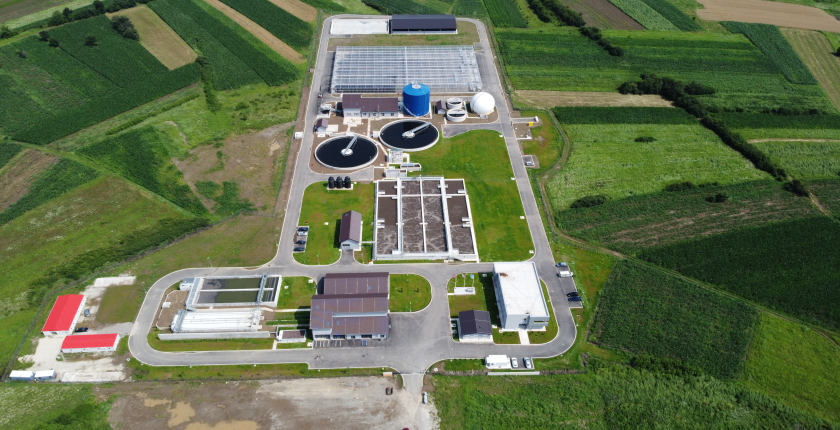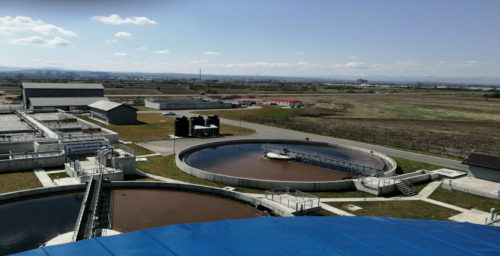
Photo: JKP Vodovod Krusevac
A newly built wastewater treatment facility in the Serbian city of Kruševac is making biogas. It’s a new approach for a country that still dumps most of its wastewater directly into rivers.
Before the EUR 24 million plants was built, the city dumped wastewater directly into the Western Morava river. Now, things are different.
Described by local media as one of the most modern facilities of its type — it’s now turning the leftover sludge into biogas which can then be used to produce electricity or heat.
The sludge is dried in the Sun in a large greenhouse-like structure. Once dried, the sludge is similar to lignite and can be used as a source of energy.
From sludge to biogas
“The facility is equipped with the most advanced technology which uses the process of anaerobic digestion to process sludge. The sludge releases biogas which is then stored in a reservoir and is turned via a gas generator into electric and thermal energy,” Vladimir Milosavljević, director of public utility company Vodovod Kruševac, explains the process.
The city’s public heating company Toplana Kruševac is also reportedly working on utilizing the processed sludge as a fuel source.
Officials from the Serbian Chamber of Commerce have said that this new project is proof that a circular economy goes hand in hand with environmental protection and the concept of “green cities.”
More wastewater treatment plants to come
While Serbia is currently not a member of the European Union, it will have to bring its environmental protections in line with EU standards as part of the accession negotiation process. As of yet, Serbia has not opened Chapter 27 of the negotiations that deal with the environment.
Turning waste into energy while preventing river pollution could bring the country one step closer.

Similar approaches to waste management may soon be coming to other cities. The European Union is set to finance — with 13 million euros from the Instrument for Pre-accession Assistance Fund — a plant reconstruction in Blace and the building of a new one in Brus.









Be the first one to comment on this article.